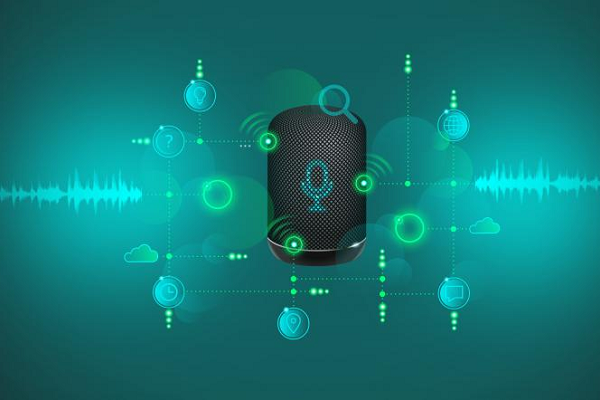3 Memorable Voice AI Trends of 2020
 As 2020 ends, it’s worth considering how the world of voice AI has changed. A lot can happen in 366 days (a Leap Year meant the year truly was longer than usual), and that’s rarely felt more true than in 2020. The COVID-19 pandemic defined so much of the year and left a heavy impact on every aspect of people’s lives. Though the coronavirus played a role in how voice AI changed this year, it wasn’t the only influence. As part of our wrap-up of the year, we’ve picked three facets of the year’s news that stood out as particularly noteworthy and likely to affect the evolution of voice AI for years.
As 2020 ends, it’s worth considering how the world of voice AI has changed. A lot can happen in 366 days (a Leap Year meant the year truly was longer than usual), and that’s rarely felt more true than in 2020. The COVID-19 pandemic defined so much of the year and left a heavy impact on every aspect of people’s lives. Though the coronavirus played a role in how voice AI changed this year, it wasn’t the only influence. As part of our wrap-up of the year, we’ve picked three facets of the year’s news that stood out as particularly noteworthy and likely to affect the evolution of voice AI for years.
Healthcare
COVID-19 sparked an immediate demand for chatbots and voice assistants that could help healthcare providers triage patients and answer questions about the virus and its symptoms. Hospitals and clinics started adding coronavirus-focused virtual assistants built by companies like Hyro and Orbita or customizing their own from Microsoft’s template. Healthcare providers are likely to apply the same idea to help people get the new vaccine. Nuance has a chatbot out ready with answers on how to determine vaccine eligibility. The deployment speed was remarkable, as well. Organizations that “typically prefer resisting new technology implementations reversed course and started deploying the conversational technologies in a matter of weeks,” as Voicebot founder Bret Kinsella pointed out in the latest Voice Insider newsletter.
After initially shutting down non-governmental voice apps related to COVID-19, all of the major voice assistant platforms incorporated their own set of COVID-19 answers based on official sources. Google Assistant now gives pandemic tips, while Alexa and Siri run COVID-19 questionnaires to assess potential infection. Later, the Mayo Clinic has published a proprietary coronavirus information voice app for Alexa. Voice tech has also been playing a more direct role in combatting COVID-19. Vocalis Health spent much of the year developing a COVID-19 voice test, as did Voca.ai, who started building a database of voice samples for assessing infection in a partnership with Carnegie Mellon University.
Customer Service
This year’s surging demand for AI support in responding to calls and messages wasn’t limited to healthcare providers. Nearly every business had to scramble to deal with a rise in calls and questions even as the companies customer engagement tech developers were putting a hold on new products due to uncertain budgets. The result was what Kinsella called “a perfect storm of demand shock and operational shock that sent many customer support organizations looking for new conversational AI technologies and expertise that could help streamline operations and better manage the spike in inbound customer requests.”
Regardless of the sustainability of that demand, a lot of money poured into the enterprise voice and text AI firms. Investors raced to give capital to relevant startups like Dialpad, who raised $100 million in October, while Replicant raised $27 million in September for its own angle on the technology. In the case of cloud contact center Five9, the solution was to bring the service in-house, which is why it spent a reported $172 million to acquire virtual agent developer Inference Solutions.
Governmental Assistance
Concerns about misinformation related to the pandemic also spurred some governments to turn to AI as a way of bringing citizens accurate information about the coronavirus. India and the UK both released chatbots on WhatsApp for answering coronavirus questions. In the U.S., several states turned to voice app developers like Voicify to design virtual assistants that could answer people’s questions about the virus. Government interest in voice and AI was about much more than the pandemic, however. U.S. states faced a spike in inquiries about voting this year as officials adjusted the logistics to cope with the pandemic. Idaho and other states created virtual assistants using IBM’s Watson AI to answer questions about the election and voting; a service IBM offered for free until after the election. Every size of government seemed to experiment with voice apps this year. The village of New Haven, Michigan, has an informational Alexa skill that didn’t exist last year, as does Mesa, Arizona, and the West Virginia Secretary of State’s Office. Estonia seems to be the most committed to the concept, with plans to launch a voice and text-based AI to accommodate a whole host of governmental services.
Follow @voicebotai Follow @erichschwartz
The Top Leaders in Voice AI for 2020 – 68 Professionals That are Driving the Industry Forward








